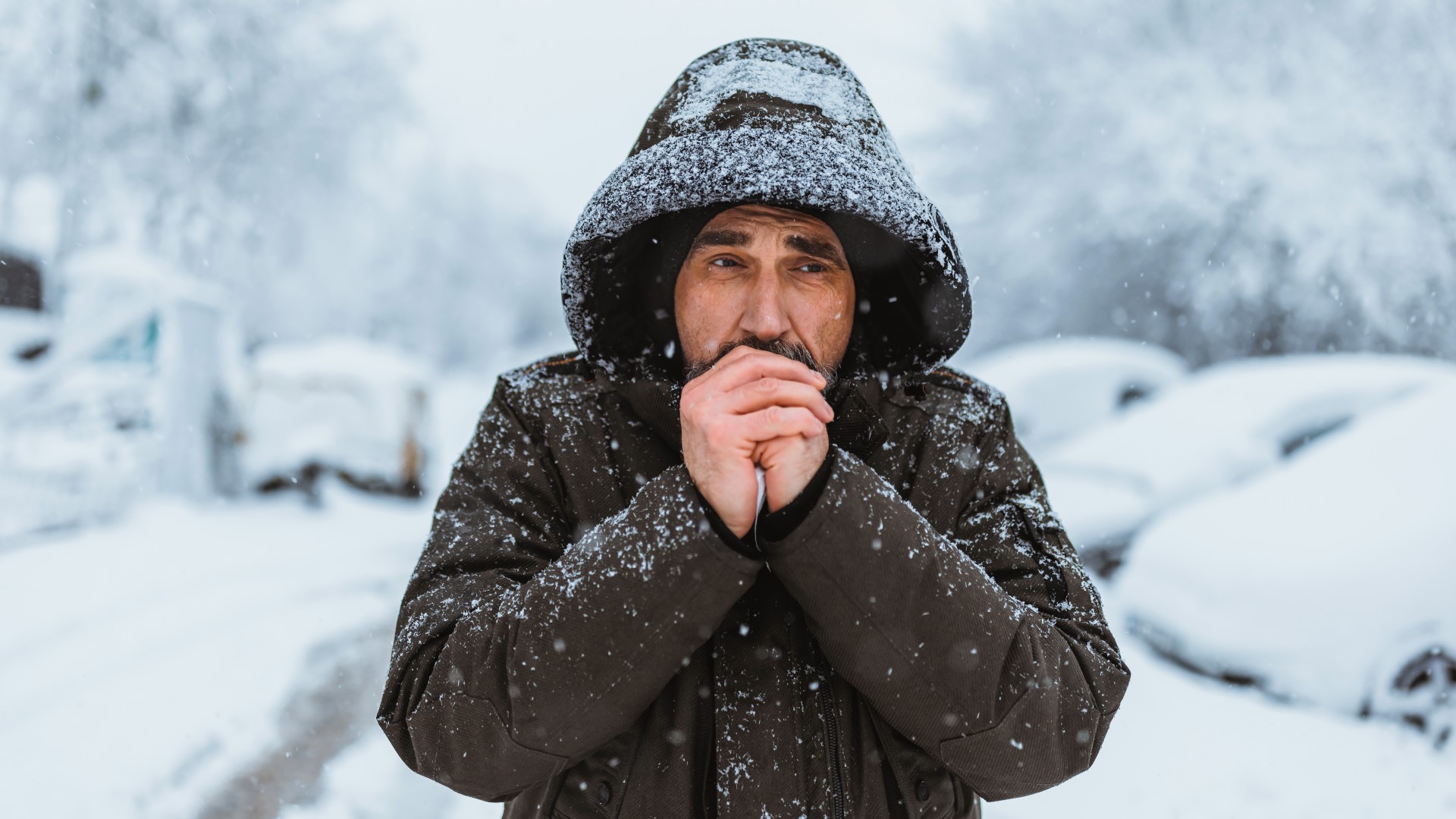
Why do we shiver when we're cold?
Have you ever wondered why you start to shake as the temperatures drops? We explain why you shiver and what it does for your body.

When it's cold outside, you shiver and your teeth chatter. But why, exactly, do those shakes happen? Though it may not seem very effective, these reflexes evolved to generate heat to keep you warm.
Your body needs to keep a core temperature of about 98.6 degrees Fahrenheit (37 degrees Celsius). To prevent hypothermia — a dangerously low body temperature — the brain monitors the body's heat level very closely, Dr. Robert Glatter, an emergency physician at Lenox Hill Hospital in New York City, told Live Science.
If the skin surface gets too chilly, skin receptors send signals to the hypothalamus, an almond-size structure deep inside the brain. The goal of the hypothalamus is to keep the body balanced in a stable state called homeostasis by helping to control body temperature, blood pressure, hunger, thirst, mood and sleep, according to the Cleveland Clinic.
One warming trick the hypothalamus may set into motion is shivering. During shivering, your skeletal muscles — the muscles connected to the skeleton that help move the body — repeatedly tense and relax in speedy bursts, according to researchers at Oregon Health & Science University. These contractions and expansions may not only make your limbs quake but also cause your jaw muscles to twitch, "making your teeth chatter," Glatter said.
Related: Why do we grind our teeth?
Muscle contractions expend chemical energy. Although some of this energy gets converted to motion, much of it is lost as heat. Shivering relies on this process to warm the body, according to Britannica.
Shivering is distinct from other kinds of shaking your body may experience. For instance, the quivering that can result from danger or frightful situations "ultimately involves the fight-or-flight response and the production of adrenaline, which is designed to make us ready to respond to a threat by making us ready to spring into action to either run or fight," Glatter said. "Adrenaline makes our muscles ready to contract, so 'shivering' observed in this context is the effect of residual adrenaline making its way through our veins and throughout our bodies."
Sign up for the Live Science daily newsletter now
Get the world’s most fascinating discoveries delivered straight to your inbox.
Hypoglycemia, or low blood sugar, "also leads to the release of adrenaline," Glatter noted. This can result in shaking, a tremor, a rapid heartbeat, anxiety, sweating and hunger.
Shivering is also distinct from a tremor, the kind of shaking sometimes seen with neurological disorders such as Parkinson's disease. "A tremor is an involuntary contraction of a muscle or muscles that results in a shaking type of movement typically in the hands, but can also result in leg, head and full-body movements," Glatter said. "A tremor occurs due to an abnormality in an area of the brain that controls movement of the muscles."
Originally published on Live Science on Feb. 8, 2013 and rewritten on June 23, 2022.










